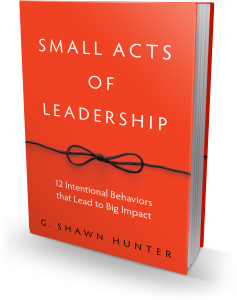What were you doing back in the day?
Most of us move through the day without recognizing the alternatives we have and actively deciding among them. As a result, we give up the feeling of control and mastery to mindfully create options and then select among them. – Ellen Langer, Ph.D.
I keep thinking lately that these are the good ol’ days. Right now. What if we could bottle up these moments and not just gaze longingly at them as memories, but instead live the best version of ourselves every day?
Many of us can pick a point in the past and remember a strong, confident version of ourselves. Think back twenty years. Here are some cues. Twenty years ago Alanis Morissette won the American Music Awards, Princess Diana had just died in August in a car crash, the Dow Jones index closed at just over 7000, Mike Tyson bit Evander Holyfield’s ear off, scientists cloned a sheep named Dolly, and the movie Titanic became the biggest box office release of all time. What were you doing then that made you feel stronger, sharper, and more alive? Did you go to the gym more? Travel more? Got a positive image in your mind of yourself back then?
Instead of reminiscing about our past selves, what if we picked up those positive habits and behaved that way today? Ellen Langer performed exactly this experiment on a group of older men in 1981. She, and her colleagues, selected a group of men in their 70s and 80s and took them to a place in New Hampshire which was renovated to look and feel exactly like 1959, twenty-two years earlier. They scattered books and magazines from 1959 around the house. They removed all of the mirrors, and decorated the house to look and feel exactly as if it was 1959, complete with vinyl records, a phonograph, and a black and white television.
To add to the sense of realism, she played “live” radio broadcasts of news reports, of baseball games, and a “live” reporting of Royal Orbit winning the Preakness horse race. The participants were instructed not to reminisce about the past, but to interact and speak to each other, as best they could, as if it really was 1959. They were asked to discuss the plane crash that “just recently” killed Buddy Holly, the importance of Hawaii becoming the 50th state in the union, and the Mercury 7 astronauts. As the week went on, the participants got deeper and deeper into living, and becoming, their past selves.
Before the experiment participants were given a battery of physical and cognitive tests to evaluate them on a variety of variables such as physical flexibility and strength, eyesight, posture, memory, attitude, and outlook.
The results were astonishing. Every single participant showed physical and mental improvement. Their posture got better, their eyesight improved. Their sense of smell, taste and hearing improved. They laughed more. Even their shoulders became more broad as they stood straighter, and their fingers got longer and less arthritic. Ellen Langer was so surprised by her findings that she underreported the results, thinking people wouldn’t believe her. At the time she didn’t report the spontaneous touch football game that happened on the last day on the front lawn. Some of the participants entered the experiment using canes.
Ellen Langer came to believe that we can transform ourselves through our mindset, our environment, and the intentional actions which reinforce our outlook on life. She has conducted similar studies over the past thirty years to demonstrate the power of our minds, and how we conduct ourselves, to show that our attitudes and behavior have significant impacts on our lives, and in turn, the lives of those around us.
In another study she asked nursing home residents to choose plants, assume responsibility for them, and decide how and when to water and care for each plant. She told a separate group of residents that she was placing plants around the facility and not to worry about them. The attendants would care for them. Eighteen months later, the people who intentionally and purposefully assumed responsibility for the plants were not only happier and more healthy, they were alive. More than twice the number of people in the other group had died during that period of time.
Langer believes the key to these personal successes in her studies is intentional mindfulness, which she defines as “a flexible state of mind in which we are actively engaged in the present, noticing new things.” In her explanation it does not necessarily require deep meditation (although that can help), it simply means being present and open to noticing new things.
Changing contexts and expectations can change results. An eye chart, for example, practically shouts out your limitations. You know that as the lines of letters get smaller and smaller, you won’t be able to read them, so you give up earlier. Langer did an experiment in which she simply turned the chart upside down and asked people to read from the bottom up. She revealed that by simply changing the experience and expectation, people can read smaller letters, and their eyesight is better, than they expected.
“Once you’ve seen there is another perspective, you can never not see that there’s another point of view.” – Ellen Langer, Ph.D.
You know there’s another way to see and experience the world. You’ve done it before. Try searching your past. Recollect, and envision deeply, a moment when you were at your best. As Tim Sanders likes to say, “What were you doing back in the day, that you’re not doing today?”
To learn the art of improv, and how to stay calm in chaos, see The Art of Leadership Presence with Karen Hough. Message me and I’ll send access to preview the course. It’s awesome.
- ____________________________________________________

Twitter: @gshunter
Say hello: email@gshunter.com
Web: www.shawnhunter.com



